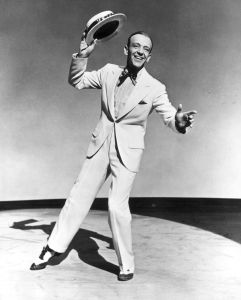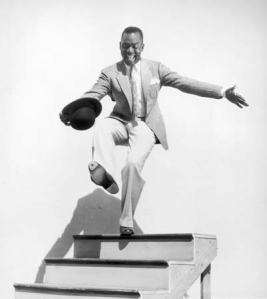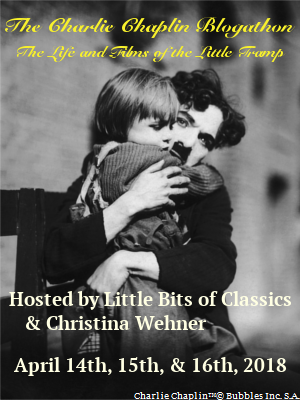 I have become addicted to watching tap dancing clips on youtube. It’s owing to Brian Seibert’s fascinating book, What the Eye Hears: A History of Tap Dancing. What makes it so addictive is that virtually all the tap dancers – not to mention the specific dances – that Seibert writes about can be found on youtube. The other affect the book had on me is to change the way I watch a tap dance. I’m now trying to listen as well as watch.
I have become addicted to watching tap dancing clips on youtube. It’s owing to Brian Seibert’s fascinating book, What the Eye Hears: A History of Tap Dancing. What makes it so addictive is that virtually all the tap dancers – not to mention the specific dances – that Seibert writes about can be found on youtube. The other affect the book had on me is to change the way I watch a tap dance. I’m now trying to listen as well as watch.
Seibert writes of how difficult tap dancing is to trace as a developing art form, partly because the early practitioners of tap dance were minstrel performers – white and black men – in blackface and it was their assertion that they were presenting an authentic representation of dancing done by slaves on the plantation, of which we have some written accounts, but not a lot of details. The question Seibert asks is how representational it really was. We don’t know. All history of tap dancing is inescapably mired in racial politics and issues of identity and imitation. Tap dancing both reinforced and sometimes slyly challenged racial attitudes. We do know that tap dancing is a blend of African dancing and Irish clogging, though no one knows exactly how or when the two traditions blended. It could have even been as early as the slave ships, were many of the sailors were Irish who brought black slaves to America and forced them dance on board ship for exercise.
There is so much in the book, it’s almost impossible to summarize. It’s comprehensive and covers history, appreciation, social commentary, mini-biographies. I learned a lot about American minstrel shows, vaudeville, even Hollywood. I learned that most dancers did not dub their own taps. When you watch Gene Kelly dance his iconic “Singin’ in the Rain,” you see him tap, but you are really hearing his dancing assistants. There were people who actually worked at Hollywood dubbing tap (often black dancers without the same opportunities as white dancers).
He talks about how tap is unique in that it is both dancing as a visual art and as an aural one. It is both dance and music and came to be intricately related to jazz, with dancers using their feet like a drum in interaction with the music. It is also an art form of “stolen steps.” Dancers would watch each other dance and try to “steal” a particular step they were doing, often putting a twist on it to make it their own. There was trading steps, too.
He also refers to the wit of someone’s tapping, the musical intelligence, skill, musicianship and range of their steps and dancing. For example, dancers like Fred Astaire and Bill Robinson had great wit. He’s not as much of a fan of Gene Kelly as a tap dancer, who he considers to have a limited number of steps which he does not use sufficiently creatively.
If you listen, it’s actually true. I still like Gene Kelly (who was more than a tap dancer – Seibert admits he could have been successful in ballet, too), but he’s not as interesting to just “listen” to as other dancers.
But this brings up an interesting aspect of tap dancing. Tap dancers can tend towards either focusing more on their tap, the sound they are making, or more on the visual aspect of dancing. The first is more musically interesting to hear and the second is more visually compelling. This is why Fred Astaire was such a success on film: without sacrificing the tapping element of his dance, he was also wonderful to watch, using all of his body or props as an extension of his body. There is also the tension between emphasizing improvisation versus choreography.
Brian Seibert is extremely thorough, exploring the origins, the era when tap reigned on Broadway and Hollywood, it’s relative demise in the late ’50s, it’s revival in the ’70s – largely brought about by persistent women who coaxed many dancers to pass on their wisdom. These women – Brenda Bufalino, Jane Goldberg – are largely overlooks now, though through their efforts, many men – masters at their art – who had never been hugely famous before were now celebrated and were able to pass their tradition on, with dancers like Gregory Hines making tap more popular in the 1980s and his chosen successor, Savion Glover, still going strong today.
 The entire book was interesting, but because of my interest in classic movies I couldn’t help but be most fascinated by his section on tap dancing in Hollywood. One of the great thing about the book is that I learned about the people who you see in movies, but never really know. For example, I knew the Nicholas Brothers. They show up in movies, danced amazingly, did incredible splits, but now I know who each brother is, Fayard and Harold, and can appreciate them as individuals. It really makes all the tap dancing teams come alive as real people.
The entire book was interesting, but because of my interest in classic movies I couldn’t help but be most fascinated by his section on tap dancing in Hollywood. One of the great thing about the book is that I learned about the people who you see in movies, but never really know. For example, I knew the Nicholas Brothers. They show up in movies, danced amazingly, did incredible splits, but now I know who each brother is, Fayard and Harold, and can appreciate them as individuals. It really makes all the tap dancing teams come alive as real people.
Here is a sample of some of the dancers through history.
Peg Leg Bates: He lost the bottom half of his leg in a machine accident while working as a child, but this did not prevent him from becoming an accomplished dancer and going to New York City. He never appeared in any movies, but appeared on the Ed Sullivan Show nearly twenty times. Because of his wooden leg, he was able to create a unique sound, contrasting the deeper, stronger resonance of his wooden leg with the lighter sound of his other leg.
Bill Robinson might have been the most famous tap dancer in the 1920s and was certainly the most successful and famous black entertainer of the era. He was known for his staircase dance, which he perfected on vaudeville and taught a version of to Shirley Temple in The Little Colonel. He style was often compared to smooth, running water – he mostly tapped on his toes and not his heel – with a brilliant regularity and symmetry of rhythm.
John Bubbles is one of the great tap dancers, though not as well known since he didn’t appear in many movies (he was the original Sportin’ Life in Gershwin’s “Porgy and Bess”). He is not the first dancer to use his heel, but he definitely used it more and brought more syncopation to tap dancing. He wasn’t a solo act, though. He was part of the duo, Buck and Bubbles. Ford “Buck” Washington played the piano and he danced and sang and they often did comedy bits together.
The Nicholas Brothers were never given a part in any film, but they appeared in quite a few, enough to make them one of the more famous tap duos in history. Fayard Nicholas was the eldest (he is the taller brother), who taught his brother, more conscious of his arms and elegance and who did more choreography. Harold is the youngest who learned quickly and had a natural charisma that tended to overshadow his brother slightly.
Fred Astaire, of course. This is a great example of how he used props and interacted with his surroundings to create a highly visually compelling and original dance, while still tapping great (this is one of the examples Seibert cites).
Gene Kelly from An American in Paris.
Baby Laurence (Laurence Jackson) was almost really a jazz musician and worked as a floor show with some of the great jazz musicians: Duke Ellington, Count Basie, was inspired by Art Tatum, Charlie Parker. We don’t have any video recordings of his younger tapping days, but he did record this album.
Gregory Hines brought tap to a wider audience again in the 1980s and also made a number of movies, showing he could act even when he wasn’t dancing. For his films he did what he called improvogrphy, a combination of choreography and improvisation. This dance is from White Nights, which he starred in with Mikhail Baryshnikov.
I was not familiar with Savion Glover before reading this book, but he is the most famous tap dancer of our era, a supreme dancer who made tap cool again, though Brian Seibert seems to both admire him and have some reservations about the direction Glover has taken tap dancing…perhaps a little too inward, a little to protective of tap dancing as he sees it and not as inclusive of people who see tap dancing differently. This clip doesn’t appear inward, though I’m not sure how typical an example it is. But he looks like he’s having a ball.








carygrantwonteatyou
January 8, 2016 at 4:19 am
Wonderful post. This books sounds so interesting. I have one of those CD collections of jazz music, A Night Out with Verve, and one of the songs is actually Astaire just tapping. I love it. BTW, you don’t get to hear the taps here, but this mashup of classic film star dancers w/ the song “Uptown Funk” is wonderful: https://www.youtube.com/watch?v=M1F0lBnsnkE
LikeLiked by 1 person
christinawehner
January 8, 2016 at 9:33 am
Wow, that’s so much fun…seriously infectious! And seriously well edited. Thanks for sharing! That is cool that you have one of Astaire just tapping! I didn’t like Astaire as much as Kelly when I was a child, but the more I see his films, read about him and listen to his tapping, the more I appreciate him. Now I can’t get enough of his dancing or films.
LikeLike
Silver Screenings
January 8, 2016 at 10:58 am
Hey! I just finished reading this book a couple of weeks ago. Fascinating history, and I admired how much of the history he was able to uncover. I didn’t realize that dancers “traded” steps – in fact, there was so much about tap that I had no clue about!
There were a few surprises, as you mentioned, such as the way tap dancing was dubbed in classic Hollywood films. I was also surprised to read the author wasn’t that enthused about Gene Kelly as a tap dancer.
Glad you posted this review. I think a lot of people would enjoy this read.
LikeLiked by 1 person
christinawehner
January 8, 2016 at 12:26 pm
I know what you mean! Tap dancing used to pretty much mean Fred Astaire and Gene Kelly to me and there is so much more to it. I really appreciated how thorough he was – like discussing the women in the 70s who helped spark a revival – and how seriously he took it.
LikeLiked by 1 person
Eric Binford
January 8, 2016 at 1:53 pm
Love tap dancing and this book sounds like something I would enjoy. Have you seen the movie Tap (1989), with Gregory Hines, Savion Glover, and Sammy Davis Jr.? It’s a wonderful tribute to this much-neglected art form.
LikeLike
christinawehner
January 8, 2016 at 8:46 pm
It is a great book if you love tap! I haven’t seen Tap, but that’s quite the cast – I’ve been developing quite the “must see” list…often thanks to your suggestions. 🙂 I didn’t know before reading the book that Sammy Davis, Jr. even tap danced. I thought he was primarily a singer, but from what I’ve read, it seems like he could do nearly everything, sing and dance and do comedy – a consummate performer.
LikeLiked by 1 person
Eric Binford
January 10, 2016 at 3:50 pm
I’m a bit older than you, so I remember seeing Davis, Jr. tap dancing in many TV variety shows. He’s extraordinary! Anyhow, here is my review of Tap (1989) : https://diaryofamoviemaniac.wordpress.com/2015/05/02/tap-1989/
LikeLiked by 1 person
Grand Old Movies
January 9, 2016 at 10:00 am
Wow, what an amazing survey of film clips. Sounds like an informative book. I’m curious if the writer mentions another aspect of tap, in that it seems, at least to me, a male-dominated form. There seem to be few notable women tap dancers. I’m curious if he had anything to say about Eleanor Powell, to me a phenomenal dancer and yet one who often presented herself in almost a masculine manner in her routines.
LikeLike
christinawehner
January 9, 2016 at 12:55 pm
I didn’t do justice to the woman with the clip choice, I’m afraid. The author definitely does talk about Eleanor Powell and even some other female dancers who I had never heard of before. I particularly appreciated his extended discussion of several of the woman who were largely responsible for the revival of interest in tap in the 1970s: Brenda Bufalino and Jane Goldberg. They worked closely with many great tap dancers and encouraged them to pass their knowledge on. He’s a very inclusive author and covers a huge swathe of history, even discussing the embrace of tap in other nations.
LikeLike
Bonnie
May 25, 2016 at 6:00 pm
This book sounds like an interesting read. Will add to my wish list. Have you read Constance Valis Hill’s Tap Dancing America? If not, I think you would enjoy it. (Although they may cover the same ground.)
LikeLiked by 1 person
christinawehner
May 26, 2016 at 6:22 pm
I have not read that one, but will definitely look for it. Thank for alerting me to it! I don’t think one can have too much tap dancing.
LikeLike